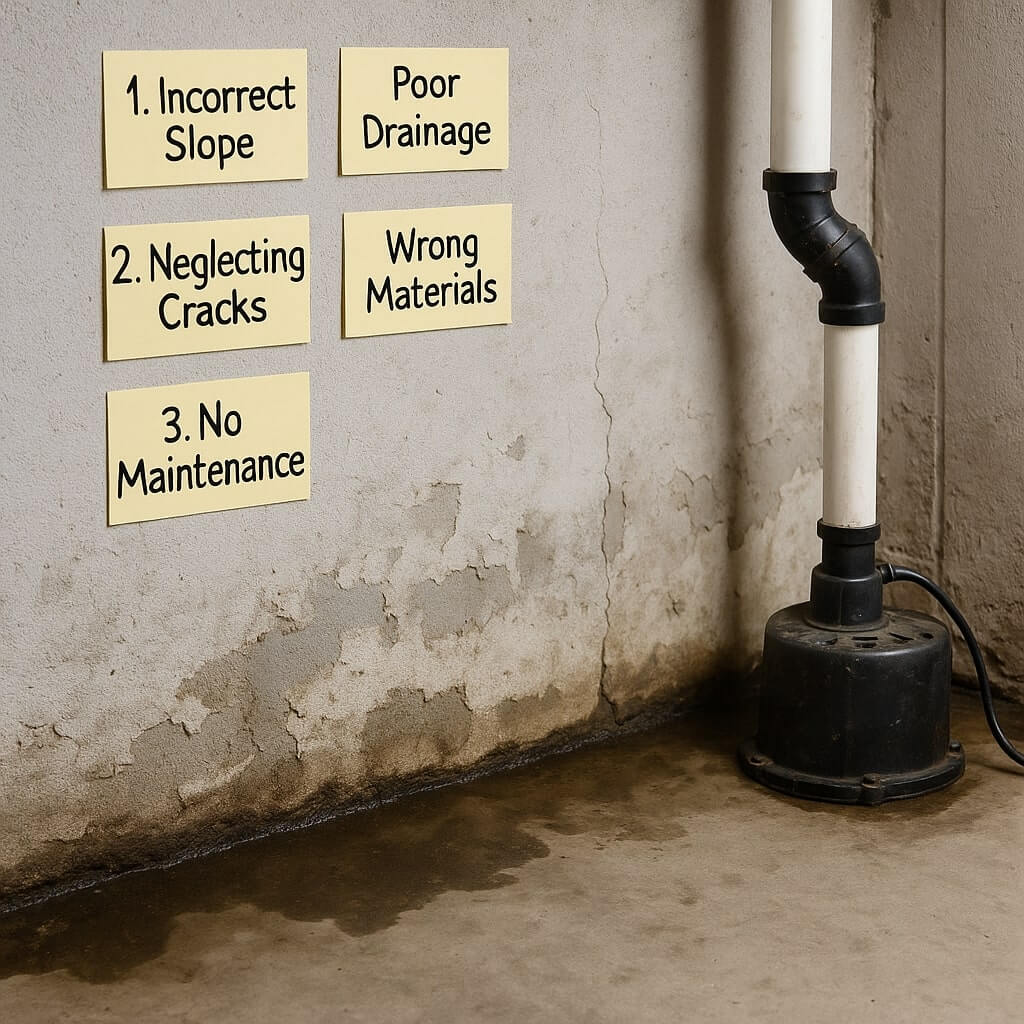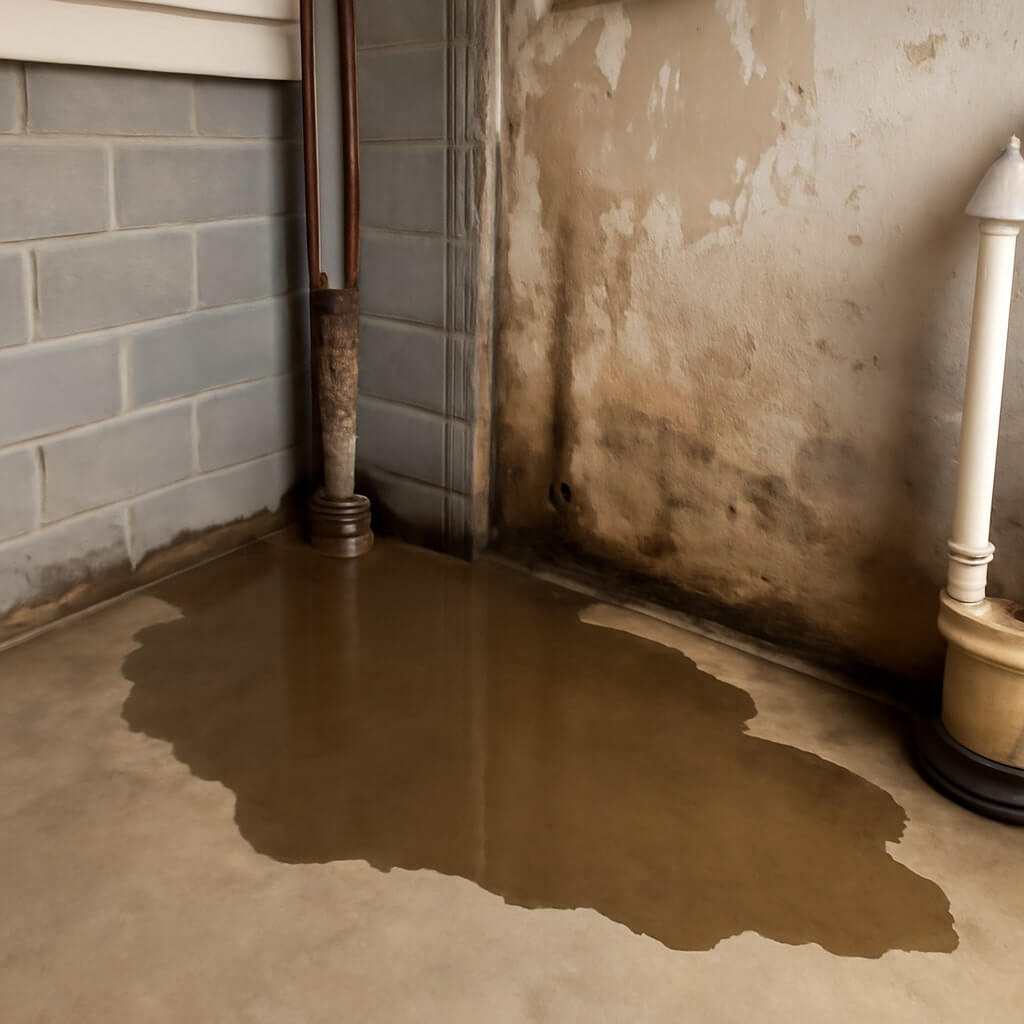If you’re dealing with a damp basement, you don’t have to break the bank to tackle the issue. There are several cost-effective methods you can use to waterproof your space without spending a fortune. From sealing cracks to improving drainage, these practical solutions can help protect your home. Let’s explore five budget-friendly strategies that can make a significant difference in keeping your basement dry and safe.
Key Takeaways
- Seal cracks and gaps with high-quality masonry sealant to prevent moisture intrusion effectively and inexpensively.
- Install a sump pump to manage water accumulation, ensuring a dry basement during rainy seasons.
- Apply waterproofing paint to walls and floors for a durable moisture barrier that is budget-friendly.
- Improve drainage systems with French drains and proper grading to divert water away from the foundation.
- Create a vapor barrier using polyethylene sheeting to block moisture from seeping through surfaces.
Seal Cracks and Gaps
When it comes to basement waterproofing, sealing cracks and gaps is one of the most effective first steps you can take.
Start by inspecting your walls and floor for cracks; even small ones can lead to significant water issues. For crack sealing, use a high-quality masonry sealant or epoxy filler. Confirm the surface is clean and dry before application for the best results.
For gap filling, consider using caulk or foam insulation to close larger openings around pipes and vents. By addressing these issues proactively, you’ll create a solid barrier against moisture, effectively protecting your basement on a budget.
Install a Sump Pump
Installing a sump pump can be a game-changer for keeping your basement dry and free from flooding.
You’ll find various sump pump types, such as submersible and pedestal pumps, each offering unique benefits.
For sump pump installation, start by selecting a suitable location in your basement, ideally below the water table.
You’ll need to dig a pit, install the pump, and connect it to a discharge line that directs water outside.
Be certain to follow manufacturer guidelines for proper installation and consider a backup battery to guarantee it operates during power outages.
This investment will pay off by preventing costly water damage.
Use Waterproofing Paint
While you might think waterproofing your basement requires extensive renovations, using waterproofing paint is a cost-effective solution that can greatly enhance your basement’s defenses against moisture.
Waterproofing your basement doesn’t have to be costly; waterproofing paint offers an affordable way to combat moisture effectively.
This paint serves as a barrier, sealing walls and floors from water intrusion. Start by cleaning surfaces thoroughly and repairing any cracks before paint application.
Choose a high-quality waterproofing paint, as it provides better durability and protection. Apply it with a roller or brush, ensuring even coverage for best results.
This straightforward waterproofing technique not only prevents leaks but also adds longevity to your basement, keeping it dry and usable for years to come.
Improve Drainage Systems
To effectively prevent water from pooling in your basement, improving your drainage systems is essential. Start by installing French drains around your property to direct water away from your foundation. This will help keep your basement dry during heavy rains. Also, guarantee proper surface grading around your home; the ground should slope away from your foundation to minimize water accumulation.
Here’s a quick comparison of drainage options:
| Method | Cost Estimate |
|---|---|
| French Drains | $1,000 – $3,000 |
| Surface Grading | $500 – $1,500 |
| Gutters | $200 – $800 |
| Downspout Extenders | $50 – $150 |
Create a Vapor Barrier
After enhancing your drainage systems, the next step in protecting your basement is to create a vapor barrier. This barrier prevents moisture from seeping through walls and floors.
Use vapor barrier materials like polyethylene sheeting, which is affordable and effective. For installation, first clean the surfaces thoroughly. Then, lay the sheeting flat, overlapping seams by at least 12 inches. Secure the edges with waterproof tape to guarantee a tight seal.
If you’re covering walls, extend the barrier up to the sill plate. By following these installation techniques, you’ll greatly reduce moisture issues and keep your basement dry and comfortable.
Conclusion
By implementing these five cost-effective methods, you can effectively waterproof your basement without breaking the bank. Sealing cracks and gaps, installing a sump pump, using waterproofing paint, improving drainage, and creating a vapor barrier will help keep your space dry and protected. Take action now to prevent costly water damage in the future. With a little effort and the right materials, you can guarantee your basement remains a safe and usable part of your home.




